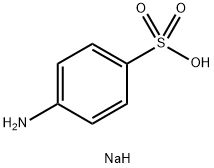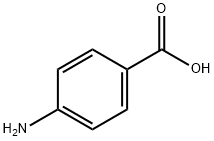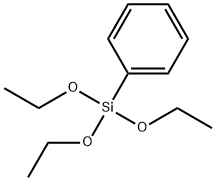2,2-Bis[4-(4-aminophenoxy)phenyl]propane
Synonym(s):2,2-Bis[4-(4-aminophenoxy)phenyl]propane
- CAS NO.:13080-86-9
- Empirical Formula: C27H26N2O2
- Molecular Weight: 410.51
- MDL number: MFCD00039152
- EINECS: 235-985-8
- SAFETY DATA SHEET (SDS)
- Update Date: 2024-12-18 14:08:52
![2,2-Bis[4-(4-aminophenoxy)phenyl]propane Structural](https://img.chemicalbook.in/CAS/GIF/13080-86-9.gif)
What is 2,2-Bis[4-(4-aminophenoxy)phenyl]propane?
Description
2,2-Bis[4-(4-aminophenoxy)phenyl]propane (BAPP), also known as 4,4'-(4,4'-Isopropylidenediphenyl-1,1'-diyldioxy)dianiline, is a diamino monomer with a diphenoxy-phenyl core. Since the molecule has two amine groups at both ends, it can be cross-linked with carboxylic acids or carboxylic dianhydrides to synthesize polyimides. It is commonly as a monomer for the preparation of polyimides in application of batteries, fuel cells, low dielectric materials and OLEDs.
Chemical properties
4,4'-(4,4'-Isopropylidenediphenyl-1,1'-diyldioxy)dianiline (2,2-Bis[4-(4-aminophenoxy)phenyl]propane) is white solid
The Uses of 2,2-Bis[4-(4-aminophenoxy)phenyl]propane
4,4'-(4,4'-Isopropylidenediphenyl-1,1'-diyldioxy)dianiline is used for preparation polyimide and epoxy resin material.
The Uses of 2,2-Bis[4-(4-aminophenoxy)phenyl]propane
It is applied in pharmaceutical industry.
What are the applications of Application
2,2-Bis[4-(4-aminophenoxy)phenyl] propane (BAPP) can be used for:
(1) Preparation of polyimides. The glass transition temperature of this new polyimide is about 225-230°C. It has the typical yield of thermoplastic polymers. It has a typical thermoplastic polymer yield behaviour, which is very different from other polyimides. The elongation at break was 6% and 29% for polyamide and polyimide, respectively.
(2) Curing epoxy resin (ER) and poly(?-caprolactone) (PCL) for the preparation of crystalline thermoset blends.
(3) Constructing dental resin composites.
Synthesis
2,2‐Bis[4‐(4‐aminophenoxy)phenyl] propane (BAPP), as a monomer to prepare polyimide, was synthesized from Bisphenol A and p‐chloronitrobenzene via the nucleophilic substitution reaction[1].
References
[1] CUILI KONG. Synthesis, Structures and Properties of Polyimide Based on 2,2′‐Bis(4‐aminophenoxy phenyl) Propane[J]. Journal of Macromolecular Science, Part A, 2006. DOI:10.1080/10601320600941086.
Properties of 2,2-Bis[4-(4-aminophenoxy)phenyl]propane
| Melting point: | 127-130 °C(lit.) |
| Boiling point: | 587.1±50.0 °C(Predicted) |
| Density | 1.178±0.06 g/cm3(Predicted) |
| vapor pressure | 0-0Pa at 20-25℃ |
| storage temp. | Keep in dark place,Inert atmosphere,Room temperature |
| form | Solid:particulate/powder |
| pka | 5.16±0.10(Predicted) |
| Water Solubility | Very slightly soluble in water. Soluble in acetone, Dimethyl sulfoxide(DMSO). |
| InChI | InChI=1S/C27H26N2O2/c1-27(2,19-3-11-23(12-4-19)30-25-15-7-21(28)8-16-25)20-5-13-24(14-6-20)31-26-17-9-22(29)10-18-26/h3-18H,28-29H2,1-2H3 |
| CAS DataBase Reference | 13080-86-9(CAS DataBase Reference) |
| EPA Substance Registry System | Benzenamine, 4,4'-[(1-methylethylidene)bis(4,1-phenyleneoxy)]bis- (13080-86-9) |
Safety information for 2,2-Bis[4-(4-aminophenoxy)phenyl]propane
| Signal word | Warning |
| Pictogram(s) |
 Exclamation Mark Irritant GHS07 |
| GHS Hazard Statements |
H302:Acute toxicity,oral H315:Skin corrosion/irritation H319:Serious eye damage/eye irritation H335:Specific target organ toxicity, single exposure;Respiratory tract irritation |
| Precautionary Statement Codes |
P261:Avoid breathing dust/fume/gas/mist/vapours/spray. P264:Wash hands thoroughly after handling. P264:Wash skin thouroughly after handling. P270:Do not eat, drink or smoke when using this product. P301+P312:IF SWALLOWED: call a POISON CENTER or doctor/physician IF you feel unwell. P302+P352:IF ON SKIN: wash with plenty of soap and water. P305+P351+P338:IF IN EYES: Rinse cautiously with water for several minutes. Remove contact lenses, if present and easy to do. Continuerinsing. |
Computed Descriptors for 2,2-Bis[4-(4-aminophenoxy)phenyl]propane
| InChIKey | KMKWGXGSGPYISJ-UHFFFAOYSA-N |
| SMILES | C(C1=CC=C(OC2=CC=C(N)C=C2)C=C1)(C1=CC=C(OC2=CC=C(N)C=C2)C=C1)(C)C |
New Products
Tert-butyl bis(2-chloroethyl)carbamate (S)-3-Aminobutanenitrile hydrochloride N-Boc-D-alaninol N-BOC-D/L-ALANINOL 3-Morpholino-1-(4-nitrophenyl)-5,6-dihydropyridin- 2(1H)-one N-octanoyl benzotriazole 3,4-Dibenzyloxybenzaldehyde 1,1’-CARBONYLDIIMIDAZOLE R-2-BENZYLOXY PROPIONIC ACID 1,1’-CARBONYLDI (1,2-4 TRIAZOLE) 4-HYDROXY BENZYL ALCOHOL 3-NITRO-2-METHYL ANILINE (2-Hydroxyphenyl)acetonitrile 4-Bromopyrazole 5-BROMO-2CYANO PYRIDINE 5,6-Dimethoxyindanone 5-broMo-2-chloro-N-cyclopentylpyriMidin-4-aMine 2-(Cyanocyclohexyl)acetic acid 4-methoxy-3,5-dinitropyridine 2-aminopropyl benzoate hydrochloride 1-(4-(aminomethyl)benzyl)urea hydrochloride tert-butyl 4- (ureidomethyl)benzylcarbamate diethyl 2-(2-((tertbutoxycarbonyl)amino) ethyl)malonate Ethyl-2-chloro((4-methoxyphenyl)hydrazono)acetateRelated products of tetrahydrofuran








You may like
-
![2,2-Bis[4-(4-aminophenoxy)phenyl]propane CAS 13080-86-9](https://img.chemicalbook.in//Content/image/CP5.jpg) 2,2-Bis[4-(4-aminophenoxy)phenyl]propane CAS 13080-86-9View Details
2,2-Bis[4-(4-aminophenoxy)phenyl]propane CAS 13080-86-9View Details
13080-86-9 -
 4,4′-(4,4′-Isopropylidenediphenyl-1,1′-diyldioxy)dianiline CAS 13080-86-9View Details
4,4′-(4,4′-Isopropylidenediphenyl-1,1′-diyldioxy)dianiline CAS 13080-86-9View Details
13080-86-9 -
 N-Vinylformamide 99%View Details
N-Vinylformamide 99%View Details
13162-05-5 -
 2-ETHYLPYRIDINE 100-71-0 99%View Details
2-ETHYLPYRIDINE 100-71-0 99%View Details
100-71-0 -
 7439-89-6 Electrolytic Iron Flakes 99.9% MaxView Details
7439-89-6 Electrolytic Iron Flakes 99.9% MaxView Details
7439-89-6 -
 7439-89-6 98.0% MinView Details
7439-89-6 98.0% MinView Details
7439-89-6 -
 Reduced Iron Powder 99.8% MaxView Details
Reduced Iron Powder 99.8% MaxView Details
7439-89-6 -
 Electrolytic Iron Powder 7439-89-6 99.8% MaxView Details
Electrolytic Iron Powder 7439-89-6 99.8% MaxView Details
7439-89-6